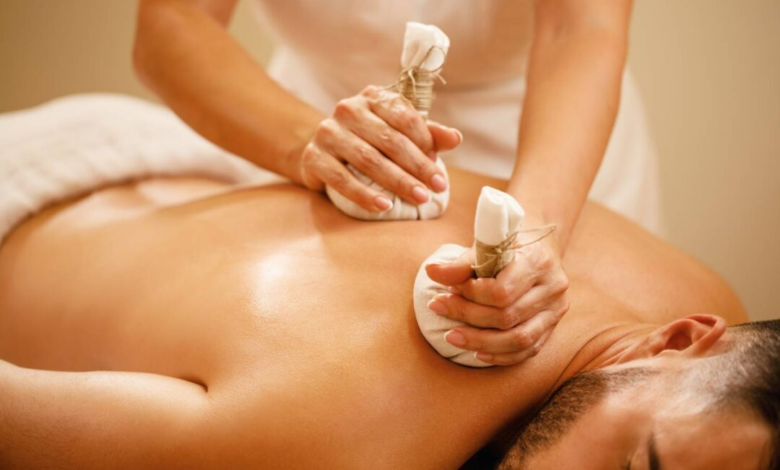The Science Behind Panchakarma: Ancient Wisdom Backed by Modern Research

Panchakarma is a classical Ayurvedic detoxification method designed to restore balance in the body. The word itself means “five actions” which represent the five primary therapies used to cleanse the body of toxins and impurities. This system focuses on eliminating the root cause of disease rather than just treating symptoms. Panchakarma is not a one-size-fits-all treatment, it is tailored to individual constitution (prakriti), imbalances (vikriti), and specific health concerns.
The Five Core Therapies Of Panchakarma
The core of Panchakarma includes five main procedures, each targeting a specific system of the body:
- Vamana (therapeutic emesis)
- Virechana (purgation)
- Basti (medicated enemas)
- Nasya (nasal administration)
- Raktamokshana (bloodletting)
These therapies are often preceded by preparatory steps like Snehana (oleation) and Swedana (sudation). Together, they aim to dislodge toxins from tissues and expel them from the body. When administered by trained practitioners, these therapies can support organ function, digestion, mental clarity, and immunity.
How Panchakarma Works
According to Ayurveda, health is a state of balance among the three doshas, Vata, Pitta, and Kapha. Lifestyle, diet, stress, and seasonal changes can cause these doshas to become imbalanced, leading to illness. Panchakarma seeks to correct these imbalances by removing accumulated toxins (ama) and restoring harmony. The treatment doesn’t just work on a physical level, it aims to rebalance mental and emotional energies as well.
Scientific Research Supporting Panchakarma Practices
Studies have shown that Panchakarma can reduce biomarkers of inflammation, oxidative stress, and even heavy metal toxicity. A 2016 study published in Scientific Reports found that a traditional Ayurvedic cleanse, including Panchakarma, led to changes in gene expression linked to immune regulation and metabolism. Although more clinical trials are needed, the early evidence is promising and highlights the therapeutic potential of these treatments.
Panchakarma’s Role In Detoxification And Immune Function
In today’s world, environmental toxins, poor diet, and stress contribute to a buildup of harmful substances in the body. Panchakarma’s targeted detoxification helps to flush out these unwanted compounds and supports liver, kidney, and digestive health. Additionally, by rebalancing the doshas and reducing inflammation, it enhances the immune response. Patients often report feeling lighter, more energetic, and mentally clear after a complete Panchakarma cycle, showing how holistic approaches can complement immune health.
Integration Of Panchakarma In Modern Wellness Clinics
Panchakarma is no longer limited to traditional Ayurvedic hospitals. Today, many modern wellness centers and integrative medicine clinics incorporate Panchakarma alongside other therapies like yoga, physiotherapy, and dietary counseling. This integration allows for a more comprehensive approach to managing chronic illness, stress, fatigue, and even post-viral recovery. As awareness around preventive healthcare grows, Panchakarma is being embraced by both Eastern and Western-trained practitioners.
Conditions Panchakarma Can Help Manage
Panchakarma is not a cure-all, but it has shown efficacy in managing several chronic and lifestyle-related conditions, including:
- Digestive disorders like IBS and acidity
- Joint pain and musculoskeletal issues
- Hormonal imbalances, including PCOS
- Metabolic conditions like obesity and type 2 diabetes
- Anxiety, depression, and sleep disturbances
Hyderabad has emerged as a leading destination for quality Ayurvedic care due to its growing number of certified practitioners, dedicated wellness centers, and integrative hospitals. The city combines traditional expertise with modern infrastructure, making it accessible for both locals and medical tourists. For those seeking expert and authentic care, opting for Panchakarma treatment in Hyderabad ensures access to some of the best facilities and experienced professionals.
Consulting The Right Practitioner
Panchakarma must always be administered under the guidance of a qualified Ayurvedic doctor. Look for practitioners with a BAMS (Bachelor of Ayurvedic Medicine and Surgery) degree and experience in Panchakarma therapies. Not everyone is suited for every therapy, and incorrect administration can lead to side effects. Always ask about the center’s hygiene practices, therapeutic protocols, and customization methods. Transparency and a thorough consultation are critical for a safe and effective Panchakarma experience.
The Future Of Panchakarma
As Ayurveda continues to gain global recognition, Panchakarma is poised to be one of its most influential contributions to holistic healthcare. Researchers, clinicians, and policymakers are now investing in more structured trials and clinical protocols to bring Panchakarma into mainstream health systems. The goal is not to replace modern medicine but to offer a complementary pathway for preventive care and chronic disease management.





